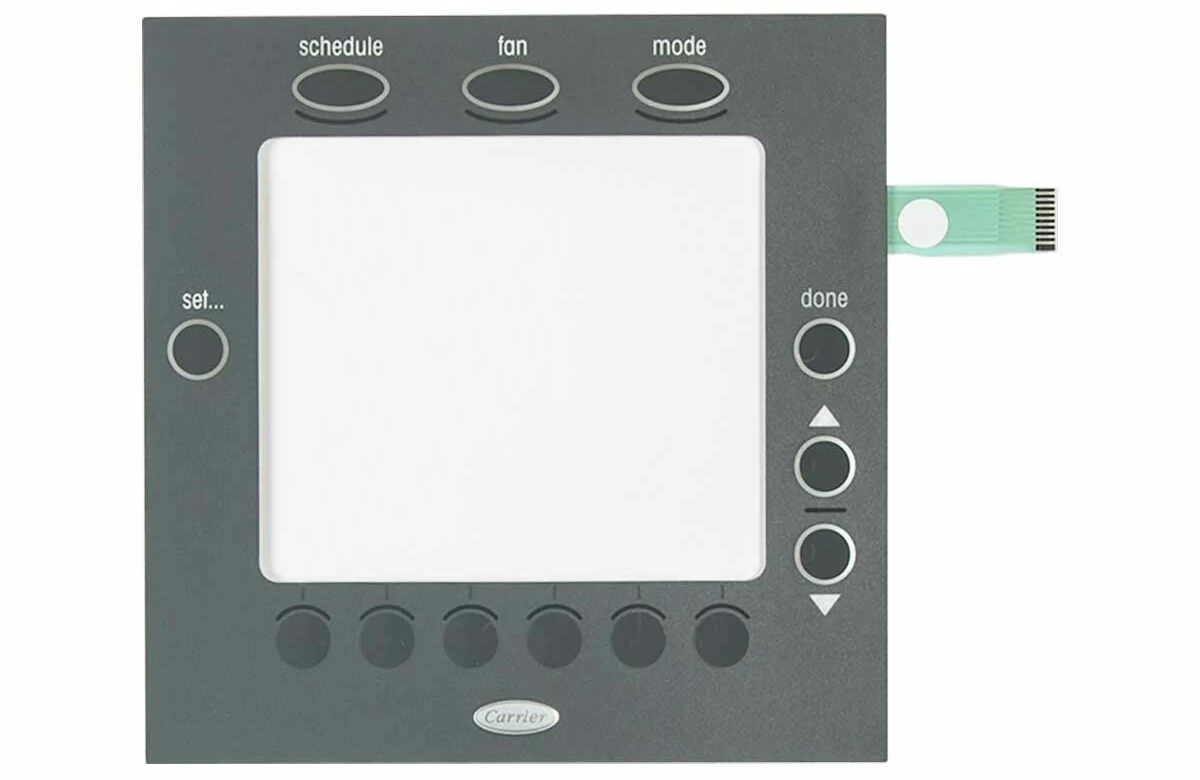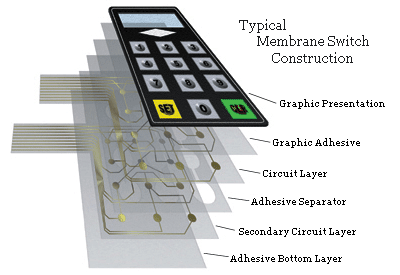Innovations in Membrane Switches for Touch-Sensitive Devices
Innovations in Membrane Switches for Touch-Sensitive Devices
Blog Article
Comprehending the Relevance of Membrane Switches in Individual User Interfaces
Membrane switches are indispensable parts in the style of efficient user interfaces, assisting in not only capability however also enhancing visual charm and individual interaction. Their special features, such as resistance to customizable designs and environmental aspects, make them suitable for a diverse selection of applications throughout several markets. As we discover the future trends and different advantages related to Membrane innovation, it ends up being clear that these buttons are a lot more than just parts; they stand for a convergence of advancement and functionality. The ramifications of this technology on user experience deserve taking a look at further.
What Are Membrane Buttons?

The spacer layer, which includes glue buildings, enables for the separation of the circuit layer from the overlay, making sure that the switch stays in a non-activated state until pushed. When stress is used to the overlay, it compresses the spacer layer, connecting the void and finishing the circuit in the underlying layer. This design not only lowers the physical area required for standard mechanical buttons however additionally enhances the sturdiness of the gadget, as Membrane buttons are normally immune to dust, wetness, and other ecological elements.
Typically found in applications ranging from customer electronic devices to medical tools, Membrane buttons are essential to contemporary innovation, giving a straightforward and efficient user interface that straightens with contemporary design demands.
Advantages of Membrane Switches
While various button technologies exist, Membrane Switches deal unique benefits that make them especially desirable in different applications. One of the main benefits of Membrane buttons is their small design, which enables space-saving applications in gadgets where property is restricted. Their slim account not just enhances visual allure yet additionally helps with light-weight building.
One more considerable advantage is their resistance to ecological elements. Membrane switches are typically sealed against dampness, dust, and contaminants, making them excellent for use popular settings, such as clinical tools and industrial devices. This toughness expands the lifespan of the button, decreasing upkeep expenses and enhancing integrity.
Moreover, Membrane switches can be customized to fulfill particular design requirements, incorporating special graphics and colors that enhance individual interaction. Their responsive responses choices can also be customized to offer a gratifying individual experience. Additionally, Membrane switches are cost-effective, specifically in high-volume applications, as they can be produced successfully.
Applications in Numerous Industries

In the consumer electronic devices field, Membrane buttons are widespread in tools such as microwaves, washing devices, and remotes. Their responsive comments and visual alternatives boost customer experience while offering a streamlined, contemporary appearance. In addition, automobile suppliers utilize Membrane switches in dashboard controls and infotainment systems, where room is restricted, and individual involvement is critical.
Moreover, the commercial sector leverages Membrane buttons in control panels for equipment and devices, enabling instinctive procedure in typically harsh settings. Their resistance to chemicals and wetness makes certain longevity and integrity in these applications. Generally, the flexibility of Membrane Switches contributes considerably to their extensive usage, making them important in various technological domain names.
Design Considerations for Membrane Switches

When creating Membrane switches, a number of essential factors to consider have to be considered to make certain optimum capability and customer experience. First of all, the choice of materials is essential; picking durable, top quality substrates can enhance the switch's long life and resistance to ecological elements such as dampness and temperature level variations.
Second of all, the design of the visuals overlay must focus on quality and ease of usage. Symbols and message have to be clear, and the layout should help with user-friendly communication (membrane switches). Additionally, responsive feedback is necessary; integrating a responsive dome or other mechanisms can this content boost the individual my website experience by providing physical confirmation of activation
An additional essential factor is the button's electric efficiency. Developers should make certain that the conductive traces are properly designed to decrease resistance and stay clear of signal disturbance. This entails evaluating the called for actuation force and ensuring compatibility with the digital components they will user interface with.

Future Fads in Membrane Technology
As innovation remains to advancement, Membrane switches are poised to develop dramatically, driven by developments in materials and making methods. One emerging fad is the incorporation of sophisticated materials, such as versatile substrates and conductive inks, which boost durability and lower the general weight of Membrane switches. These materials not only boost the tactile action but additionally permit the layout of buttons that can endure harsher ecological problems.
Additionally, the assimilation of touch-sensitive modern technologies is transforming typical Membrane Switches right into even more interactive user interfaces. Capacitive touch sensors embedded within Membrane switch panels can supply an extra intuitive and responsive individual experience, straightening with the growing need for streamlined, modern styles in consumer electronic devices.
Additionally, innovations in printing methods, such as electronic and 3D printing, allow quick prototyping and personalization of Membrane buttons. This versatility redirected here permits suppliers to react faster to market needs and consumer preferences.
Lastly, sustainability is ending up being a significant emphasis, with manufacturers exploring green products and processes. As these fads unravel, the future of Membrane innovation promises improved functionality, aesthetic allure, and ecological obligation, solidifying their duty in innovative interface throughout different markets.
Conclusion
Finally, Membrane Switches represent an important component in the layout of customer interfaces, combining capability with aesthetic versatility. Their advantages, including resilience and resistance to ecological aspects, make them suitable for varied applications throughout different industries. Thoughtful layout considerations improve customer communication and experience. As advancements in innovation proceed, the advancement of Membrane buttons is anticipated to more fine-tune interface, driving development and enhancing use in a significantly intricate technical landscape.
Membrane buttons are indispensable components in the design of efficient customer interfaces, helping with not only performance yet likewise enhancing visual charm and user interaction.Membrane Switches offer as an essential element in different customer interfaces, promoting a smooth interaction between customers and electronic gadgets.While numerous button technologies exist, Membrane Switches deal distinctive benefits that make them especially desirable in different applications.Moreover, Membrane buttons can be tailored to fulfill details layout needs, including unique graphics and colors that boost individual communication.In final thought, Membrane Switches stand for a crucial element in the style of individual interfaces, incorporating capability with aesthetic adaptability.
Report this page